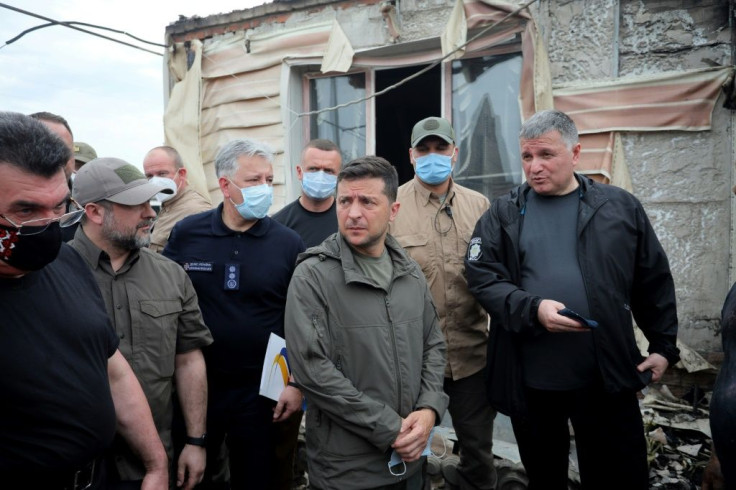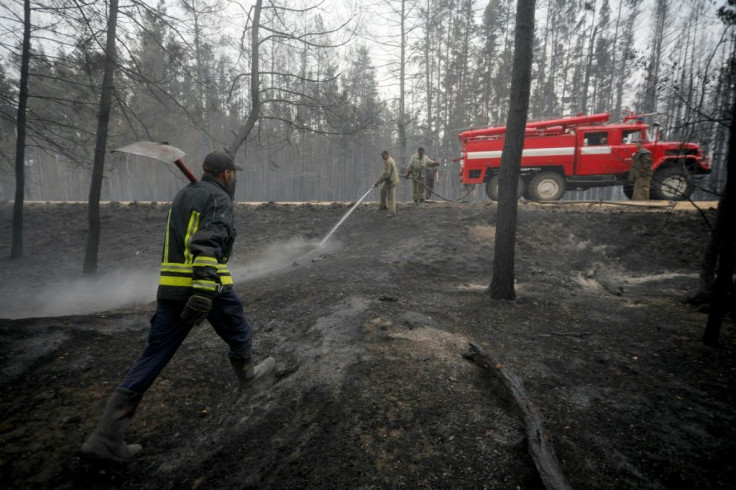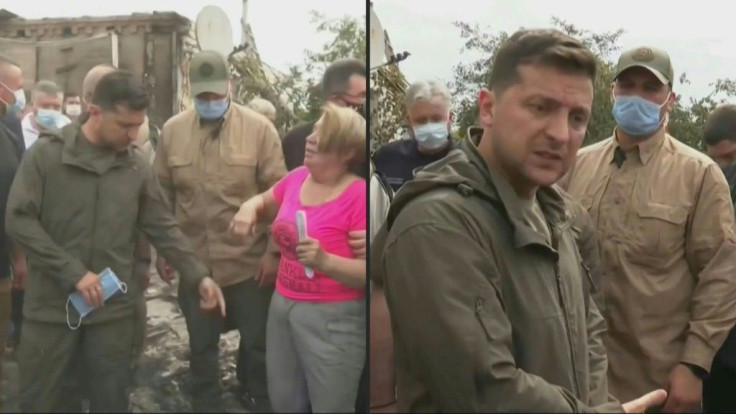Ukraine Pins Hopes On Weather To Beat Deadly Forest Fires

Forest fires in eastern Ukraine that have killed five people and left dozens homeless are being brought under control by firefighters, officials said on Wednesday.
Interior Minister Arsen Avakov said the situation was improving and he had seen no new fires during a fly-over with President Volodymyr Zelensky and other senior officials.
The blaze began on Monday in Lugansk region and engulfed Smolyanynove, a village just 20 kilometres (12 miles) from the front line of Ukraine's war with Russia-backed separatists.
Pine trees were still smouldering on Wednesday near the village which was dotted with the remains of charred houses.
More than 1,200 firefighters, rescue workers and National Guard are fighting blazes in three locations, Avakov said.
Firefighting planes were also dispatched despite fears that Russian-backed separatists could shoot them down.
More than 100 homes have been destroyed entirely in two villages, with dozens more damaged, according to the ministry.

An AFP correspondent in Smolyanynove saw animal corpses and scorched buildings with their window panes melted and gardens burned.
The village was enveloped in thick smoke with flames still visible in nearby forests on Wednesday.

"I am 70 years old and I have nothing left," said Viktor, a villager whose house completely burned down.
Some residents were barefoot because they had fled their homes so quickly.
"I have never seen that in my life," said Vasyl, a rescuer, dousing water over a smouldering fire in the charred remains of a house.

Avakov said the wind had died down since Tuesday, making it easier to battle the blaze.
"We flew over the site and we did not see any additional fires... we do not see a threat," he said.
Twenty people have been hospitalised, the Attorney General's office has said, and some elderly residents' children have been evacuated from the region, according to governor Sergiy Gaidai.
The Interior Ministry said on Tuesday that six people had died as a result of the fires, but revised the death toll down to five.
An official told AFP on condition of anonymity that there was "confusion" over the numbers and that the figure could rise with some people unaccounted for.
Some local residents believe the fire was started deliberately to hide illegal logging in the area.
"Everyone believes it was an arson," 37-year-old local resident Oleksandr said.
The police said it was considering three possible causes, including extreme weather conditions, careless handling of fire, and deliberate arson.
Ukraine has been hit by a heatwave in recent days -- including in the east of the country -- which is believed to have contributed to the spread of the fire.
Scientific models predict that changes in climate will increase the frequency and severity of extreme weather events, like catastrophic fires or devastating hurricanes.
"When temperatures rise to 40 degrees Celsius (104 degrees Fahrenheit), this is extreme temperature," Anatoliy Prokopenko, a deputy head at the Ukrainian Hydrometeorological Centre, told AFP.
Earlier this year, a huge fire engulfed the Chernobyl exclusion zone, devastating lush forests at the scene of the world's worst nuclear accident and dealing a major blow to its ecosystem.
© Copyright AFP {{Year}}. All rights reserved.





















